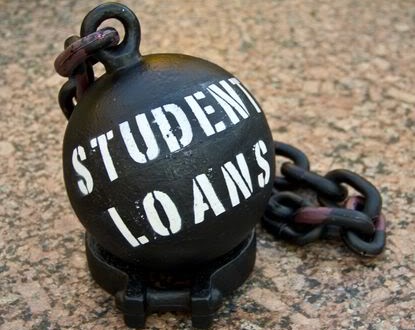Interest rates and fees rise, subsidized loans won’t accrue interest during grace period
Oakland, CA – July 1 is when most changes to federal student aid go into effect for the coming school year. Several are lined up for 2014-15, including higher interest rates on new student loans for undergraduates, graduate students, and parents. The Institute on College Access & Success’ (TICAS) Project on Student Debt has created a new easy-to-read chart with interest rates, loan amounts, and other useful information about federal loans issued in 2014-15.
In 2013, Congress changed the interest-rate rules for federal student loans. Rates for new loans are now set each year based on the 10-year U.S. Treasury note rate in the spring of that year plus a fixed percentage that varies based on the loan type. Those rates are then fixed for the life of the loans.
“Federal student loans are still the safest way to borrow for college, with fixed rates, flexible repayment options like income-based repayment, and consumer protections like discharges when schools close,” said Lauren Asher, TICAS president. “But with interest rates on the rise, federal loans are expected to cost students and families more over time than if Congress had simply left them alone last year. Without clear information about the benefits of federal loans, news of rising rates may lead more borrowers to take on much riskier private loans instead.”
The rates for new loans this year are lower than if Congress had let the old rules stand, but beginning next July, the rates on some loans are expected to be higher than under prior law. According to Congressional Budget Office (CBO) projections, rates for new loans will rise substantially over the next decade and generate $127 billion in government profits at borrowers’ expense. Under prior law, interest rates would have consistently been 6.8% for all Stafford loans and 7.9% for PLUS loans. Under currentlaw, CBO projects rates for undergraduates to exceed 6.8% by 2017, and rates for graduate students and parents to top their old levels in 2015, just one year from now.
The changes coming on July 1 also include some good news for students and families:
- For new subsidized loans, interest won’t accrue during the six-month grace period before the first payment is due. (This benefit was temporarily eliminated for subsidized loans issued in 2012-13 and 2013-14.)
- The maximum Pell Grant will increase by $85 to $5,730 (up from $5,645), financed by savings from cutting costly middlemen out of the student loan process back in 2010. However, even with this increase, the maximum Pell Grant will cover less than a third of what it costs to attend a four-year public college, the smallest share since the program began.
And here’s how the higher loan costs break down for federal student loans issued in 2014-15:
- Fixed interest rates
- Stafford loans for undergraduates: 4.66% (up from 3.86% for loans issued in 2013-14).
- Stafford loans for graduate students: 6.21% (up from 5.41% for loans issued in 2013-14).
- Parent and Graduate PLUS loans: 7.21% (up from 6.41% for loans issued in 2013-14).
- Origination fees
- Because of budget sequestration enacted by Congress in 2011, origination fees will rise for federal Direct loans disbursed on or after October 1, 2014. For Stafford loans the fee will be 1.073% of the loan principal (up from 1.072%); for PLUS loans it will be 4.292% (up from 4.288%).
TICAS’ 2013 white paper includes detailed recommendations to keep federal student loans affordable, streamline the loan program, and better target benefits, as well as broader reforms to increase college affordability and completion.
For more information on new student loan terms, please see our summary of Federal Student Loan Terms for 2014-15.
 Westside Story Newspaper – Online The News of The Empire – Sharing the Quest for Excellence
Westside Story Newspaper – Online The News of The Empire – Sharing the Quest for Excellence




